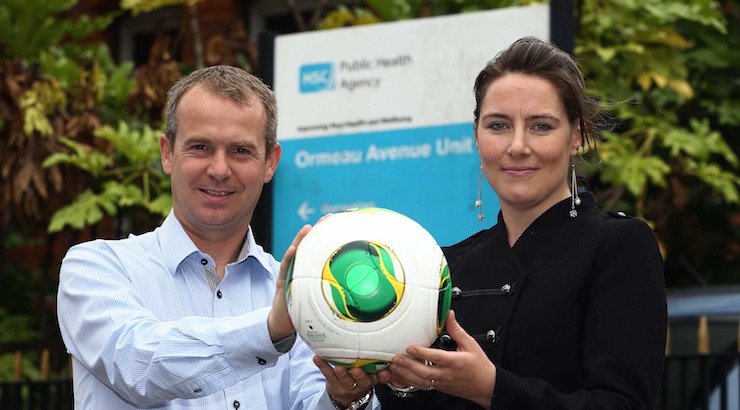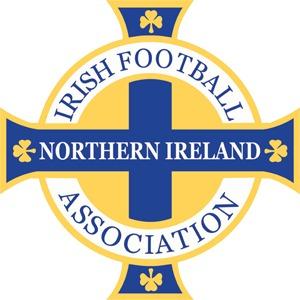The Importance Of Staying Hydrated As An Athlete
Geoff Wilson is the Head of Marketing and Communications for the Irish FA (Football Association), based in Belfast, Northern Ireland. In that role he handles public relations, public affairs, commercial programs and more for the organization. In addition, he is a Members Association Performance Consultant with FIFA, working with Associations in such countries as Jordan, Latvia, Moldova and Belarus to develop strategic branding and marketing programs to aid in development.
Wilson also holds both UEFA ‘B’ and ‘A’ license coaching badges, and it was from a nutritional seminar during his license studies that he developed a strong interest in sports nutrition. From there he went on to help develop a health program for the Irish FA that educates football (soccer) families on healthy eating and nutrition, as well as tackling mental health in players.
The need for proper hydration is critical for success on the soccer field. Youth soccer players are more apt to forget to drink enough fluids and may need encouragement but forgetting to consume enough liquids can happen even to pros.
Football — as it is called in most of he world and is referred to in America as soccer — is an intermittent high intensity, multiple sprint sport with all critical events in a game normally preceded by a sprint; for example: scoring a goal or a goal saving tackle.
- In between these bursts of intense activity lower intensity activities such as walking, jogging and submaximal running are performed.
- It is estimated that soccer players travel up to 10Km during 90-minute matches! Therefore it is vital that players can recover as quickly and as fully as possible, during these lower intensity events in readiness for the next vitally important high intensity activity.
WHAT HAPPENS TO THE BODY DURING EXERCISE?
During exercise body temperature increases. As humans can only tolerate small increases in internal temperature the body must get rid of this heat to prevent overheating and heatstroke.
HOW DOES THE BODY PROTECT ITSELF FROM OVERHEATING?
To protect itself from the effects of overheating, our body regulates heat. The main way is through sweating which accounts for up to 80% of heat loss during vigorous exercise. For example, a moderate intensity workout generally produces 0.5 – 1.5 litres of sweat over a 1 hour period. Sweating plays an essential role in regulating body temperature. However there is a price to pay! As our bodies are made up of around 55-65% fluid, it is important to have a source of fluid before, during and after exercise as dehydration massively affects athletic performance.
THE DANGERS OF DEHYDRATION
Dehydration occurs when fluid loss is not replaced by fluid intake. As body water levels decrease, plasma volume decreases. This means the heart must work harder to meet the body’s oxygen demands. Also, there is now less blood available to cool the heat being transported from the body’s core to its surface. Extreme dehydration can be fatal but is extremely rare during athletic activities. What is of more immediate concern to players and athletes is the fact that dehydration can affect physical performance – even sweat losses of as little as 2% can seriously affect sporting ability!
Football fact:
A study of football games has shown that most goals are scored in the final quarter of games, the reason being that as players begin to tire both physically and mentally their abilities start to decline. As a result more mistakes are made so there are more goal scoring opportunities. The lesson here is that if you and your team mates can postpone the onset of fatigue for longer then you are likely to decrease the amount of errors made.
SIGNS OF DEHYDRATION
- Dry mouth,
- Reduction in urine
- Decrease in physical work capacity
- Difficulty concentrating, poor co-ordination
- Headache, impatience
- Increased respiratory rate leading to tingling and numbness of fingertips etc
- Likely collapse if combined with heat and exercise
WHEN TO CONSUME FLUID
Isotonic sports drinks should be taken BEFORE,DURING and AFTER sport.
Pre – Exercise
- The aim of pre-exercise hydration is to start every training session/match well hydrated. In addition to including fluid as part of your daily routine, you should aim to drink a maximum of between 2.5 cups of water, sports drink or other fluid in the two hours prior to exercise. Thirst is not an accurate indicator of hydration status so you should monitor hydration status by using ‘pee charts’, which grade the color of your urine. Urine, which is pale and yellow in color, suggests good hydration.
In addition to this fluids which are slightly chilled can increase the rate at which your body absorbs the fluid ingested- so a top tip is to drink small sips of chilled fluid over a period of time to help your sporting performance.
During Exercise
During exercise the aim is to replace fluid lost through sweating to prevent excessive dehydration. Every athlete should develop his or her own strategy for drinking during sport. This will depend on how much sweat is usually lost during exercise and will be affected by the heat and humidity on the day of training/competition. Generally speaking, for exercise which lasts over an hour, a guide might be to aim to drink 150-250 mls every 15 minutes during exercise to offset fluid losses.
You should make the most of every opportunity to take on fluid, so always have your own drinks bottle handy to keep your hydration levels topped up.
Be repaired when you are going to training as well as on match day! Providing an additional source of carbohydrate during exercise can help improve performance by topping up your energy levels. One way to achieve this is the use of sports drinks.
Sports drinks are designed to tackle both fluid and energy loss by providing: fuel in the form of carbohydrate, fluid to replace what is lost as sweat and electrolytes to help the body retain fluid. The combination of these three factors will help prevent dehydration, ultimately improving your performance and recovery.
If you choose to use sports drinks it is important to remember the following to ensure good dental health:
- Drink quickly and avoid sipping slowly
- Don’t ‘hold’ or ‘swish’ drinks around your mouth
- Use a straw or a squeezy sports bottle to reduce contact time with teeth
- Brush teeth twice a day using fluoride toothpaste
- Visit your dentist regularly
Word of caution – sports drinks should not be used by young children (due to the electrolyte content), instead why not try adding a small amount of diluting juice to water which will still assist in hydrating for sport.
After Exercise
After exercise the aim is to FULLY REHYDRATE! How much fluid you need will depend on how much you have lost. This will vary depending on the duration and intensity of exercise performed as well as the climatic conditions – on a hotter day you will sweat more and will therefore need more fluid to rehydrate before your next training session.
As a general guide you should aim to drink 500mls of fluid following exercise.
This amount can then be increased until the colour of the urine returns to pale yellow and you are fully hydrated. The use of sports drinks post exercise will also help you to rehydrate and ‘top up’ your muscle glycogen stores in preparation for your next training session.
HANDY HINTS TO KEEP YOUR HYDRATION IN CHECK
- Monitor weight before and after exercise. For each kilogram of weight lost via drink 1.2 to 1.5 litres of water post exercise.
- Check the colour of your urine – it should be a pale and yellow color
- As thirst is an unreliable indicator of fluid requirements, always carry a drinks bottle with you and drink small amounts of fluid regularly.
- Practice drinking during training to become accustomed to drinking fluids while exercising.
- Avoid sharing drinks bottles. Having your own bottle allows you to keep an eye on how much fluid you have consumed and prevent the spread of coughs and colds. If you choose to consume an isotonic sports drink do not swish these around the mouth and be mindful of your dental hygiene.
Follow the Irish FA on Twitter @Officialirishfa to keep up to date on other health events and conferences.







